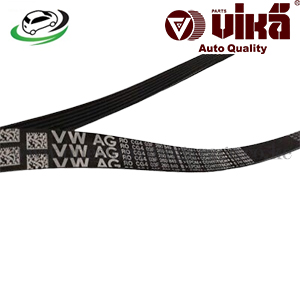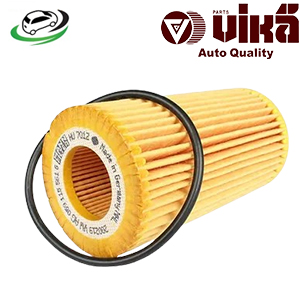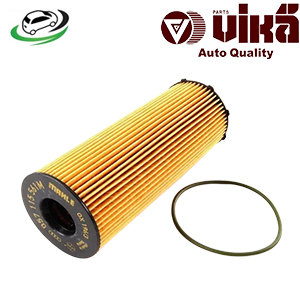-10%
Get Oil Filter Assy Audi Q7 TDI / VW Touareg 2 V6 TDI / Touareg 3 V6 TDI 057115561M
The oil filter assembly (often referred to as the oil filter assy) is a crucial component in a vehicle’s engine lubrication system. Its primary role is to filter out contaminants from the engine oil, ensuring that only clean oil circulates through the engine. This helps to protect the engine’s internal components from wear and tear, improves engine performance, and extends the engine’s lifespan. In this detailed guide, we will explore the function, construction, types, benefits, common issues, and maintenance of the oil filter assembly.
Function of the Oil Filter Assembly
The oil filter assembly is designed to perform the following key functions:
- Filtering Contaminants:
- Primary Function: The main function of the oil filter is to remove contaminants such as dirt, metal particles, carbon deposits, and other debris from the engine oil. These contaminants can cause significant damage to engine components if they are not filtered out.
- Filtration Process: As the engine oil circulates through the engine, it passes through the oil filter, where contaminants are trapped in the filter media, allowing only clean oil to flow back into the engine.
- Maintaining Oil Pressure:
- Pressure Regulation: The oil filter helps maintain the proper oil pressure within the engine by ensuring that the oil flows freely through the filter and into the engine. A clogged or damaged filter can cause a drop in oil pressure, leading to inadequate lubrication and potential engine damage.
- Extending Engine Life:
- Protection from Wear: By filtering out harmful particles, the oil filter protects the engine’s internal components, such as the crankshaft, camshaft, bearings, and pistons, from excessive wear. This helps extend the engine’s lifespan and ensures reliable performance over time.
- Enhancing Engine Performance:
- Optimized Lubrication: Clean oil is essential for the efficient operation of the engine. The oil filter ensures that only clean, contaminant-free oil reaches the engine’s moving parts, reducing friction, improving efficiency, and enhancing overall engine performance.
Construction of the Oil Filter Assembly
The oil filter assembly is composed of several critical components that work together to ensure effective filtration and oil flow:
- Filter Media:
- Material: The filter media is typically made from cellulose, synthetic fibers, or a blend of both. Synthetic media are more durable and offer better filtration efficiency.
- Function: The filter media traps contaminants as the oil passes through it. The design and density of the media determine the filter’s efficiency and capacity to hold contaminants.
- Canister or Housing:
- Material: The housing is usually made of metal or durable plastic, designed to withstand high pressure and temperature.
- Function: The canister encloses the filter media and holds the filtered oil. It is designed to be strong enough to prevent leakage and withstand the harsh conditions inside the engine.
- Anti-Drainback Valve:
- Material: Typically made of silicone or rubber.
- Function: This valve prevents oil from draining out of the filter when the engine is turned off. It ensures that oil is available immediately upon startup, reducing wear during cold starts.
- Bypass Valve:
- Material: Usually metal or reinforced plastic.
- Function: The bypass valve allows unfiltered oil to flow into the engine if the filter becomes clogged or if the oil is too thick (such as during a cold start). This prevents oil starvation and ensures the engine remains lubricated, even if the filter is compromised.
- Gasket:
- Material: Typically made from rubber or silicone.
- Function: The gasket provides a seal between the filter and the engine block, preventing oil leaks. It ensures that all oil passes through the filter media rather than bypassing it.
- End Caps:
- Material: Usually metal or reinforced plastic.
- Function: The end caps hold the filter media in place and direct the flow of oil through the filter. They are essential for maintaining the integrity of the filter.
Types of Oil Filter Assemblies
There are several types of oil filter assemblies available, each with its specific design and application:
- Spin-On Oil Filters:
- Design: This is the most common type of oil filter, featuring a metal canister with a threaded base that screws directly onto the engine.
- Application: Widely used in most passenger cars and light trucks. It is easy to install and replace.
- Cartridge Oil Filters:
- Design: This type of filter consists of a replaceable filter element (cartridge) that fits inside a permanent housing attached to the engine.
- Application: Commonly found in modern vehicles, especially those with environmentally conscious designs, as the cartridge is easier to recycle than a metal canister.
- Magnetic Oil Filters:
- Design: These filters have a built-in magnet that attracts and holds ferrous metal particles in addition to the regular filter media.
- Application: Often used in high-performance or heavy-duty engines where metal particles are a particular concern.
- High-Efficiency Oil Filters:
- Design: These filters use advanced synthetic media for superior filtration efficiency, often with a finer mesh that traps smaller particles.
- Application: Ideal for high-performance vehicles or those that require extended oil change intervals.
Benefits of a Properly Functioning Oil Filter Assembly
A well-maintained and properly functioning oil filter assembly provides numerous benefits:
- Improved Engine Longevity:
- Reduced Wear: By consistently removing contaminants, the oil filter helps prevent premature wear of engine components, significantly extending the engine’s lifespan.
- Better Engine Performance:
- Optimized Lubrication: Clean oil ensures that all engine components are properly lubricated, reducing friction and enhancing overall engine performance.
- Lower Maintenance Costs:
- Prevention of Major Failures: By protecting the engine from debris and contaminants, the oil filter reduces the likelihood of major engine failures, leading to lower maintenance and repair costs over time.
- Enhanced Fuel Efficiency:
- Efficient Operation: A clean engine runs more efficiently, which can lead to better fuel economy. Contaminants in the oil can increase engine friction and reduce efficiency.
- Environmental Protection:
- Reduced Emissions: Clean oil helps the engine burn fuel more efficiently, leading to lower emissions and a reduced environmental footprint.
Common Issues with Oil Filter Assemblies
Despite their crucial role, oil filters can develop issues that may affect engine performance:
- Clogging:
- Causes: Over time, the filter media can become saturated with contaminants, reducing oil flow.
- Symptoms: A clogged filter can cause a drop in oil pressure, leading to poor lubrication and potential engine damage.
- Oil Leaks:
- Causes: A damaged gasket, improperly installed filter, or a faulty housing can cause oil to leak from the filter.
- Symptoms: Oil leaks can lead to low oil levels, which can result in inadequate lubrication and potential engine damage.
- Bypass Valve Failure:
- Causes: A malfunctioning bypass valve can either remain open or closed, leading to unfiltered oil entering the engine or a reduction in oil flow.
- Symptoms: This can cause engine wear due to unfiltered oil or a lack of lubrication.
- Anti-Drainback Valve Failure:
- Causes: A faulty anti-drainback valve can allow oil to drain back into the oil pan when the engine is turned off.
- Symptoms: This can cause engine wear during cold starts as the engine is momentarily starved of oil.
- Incorrect Filter Use:
- Causes: Using the wrong type of filter or one with inadequate filtration capacity can lead to improper oil flow and inadequate protection.
- Symptoms: This can result in poor engine performance and increased wear.
Maintenance of the Oil Filter Assembly
Proper maintenance of the oil filter assembly is essential for ensuring optimal engine performance:
- Regular Replacement:
- Intervals: Follow the vehicle manufacturer’s recommended oil change intervals, which typically include replacing the oil filter.
- Signs of Wear: If the filter shows signs of damage, clogging, or leakage, replace it immediately, even if it hasn’t reached the recommended interval.
- Correct Installation:
- Proper Fit: Ensure the oil filter is correctly installed, with the gasket properly seated and the filter tightened to the manufacturer’s specifications.
- Lubrication: Apply a thin layer of clean oil to the gasket before installation to ensure a proper seal.
- Using the Right Filter:
- Compatibility: Always use an oil filter that is compatible with your vehicle’s engine and meets the manufacturer’s specifications for filtration capacity and pressure.
- Inspect for Leaks:
- Visual Checks: After an oil change, inspect the oil filter and surrounding area for leaks. If any oil is present, recheck the installation.
- Monitor Oil Pressure:
- Gauge Reading: Keep an eye on the oil pressure gauge or warning light on your dashboard. A sudden drop in oil pressure could indicate a problem with the oil filter or the lubrication system.
Follow us on Facebook for more parts.





